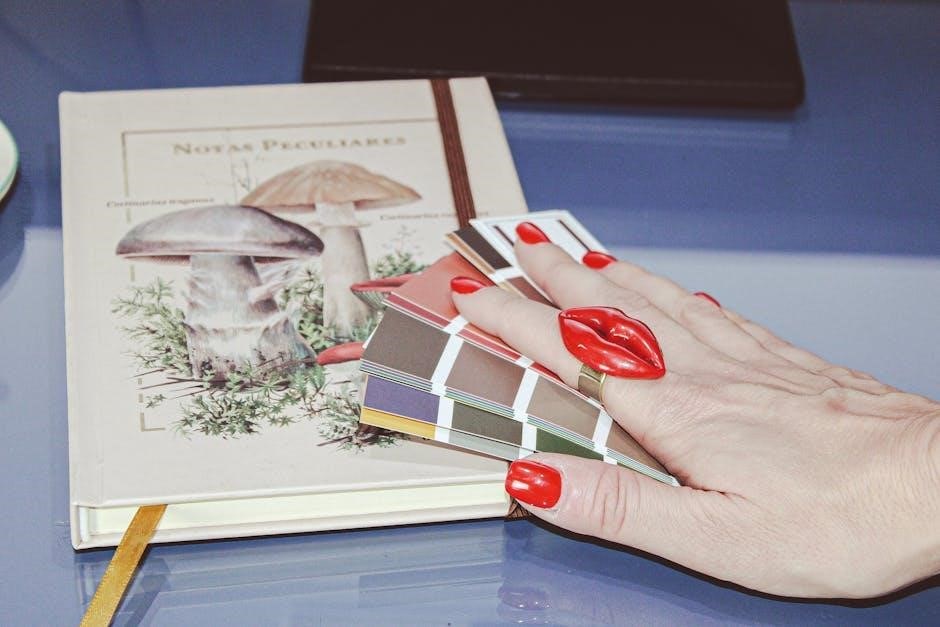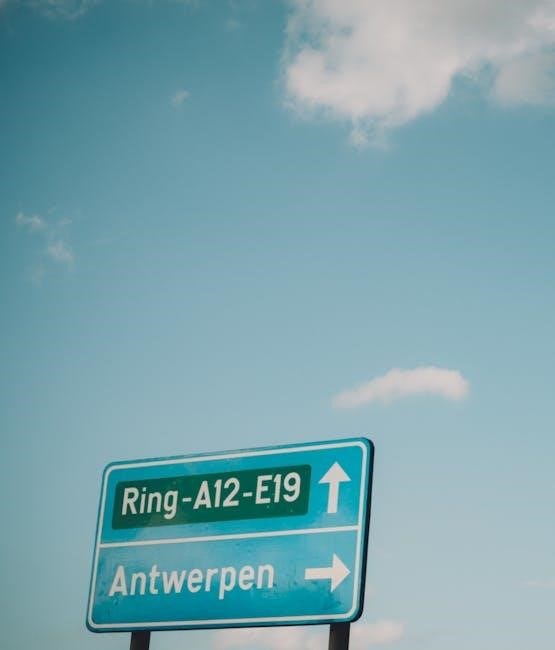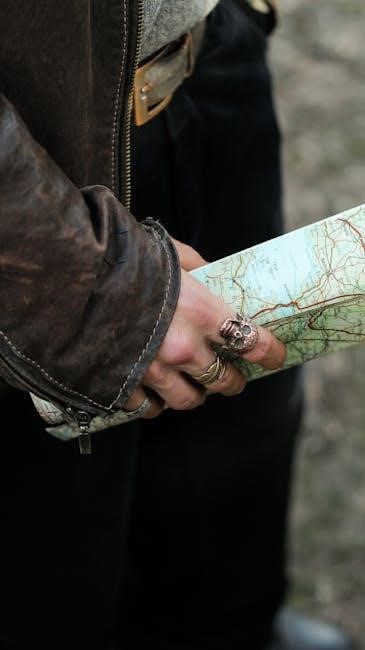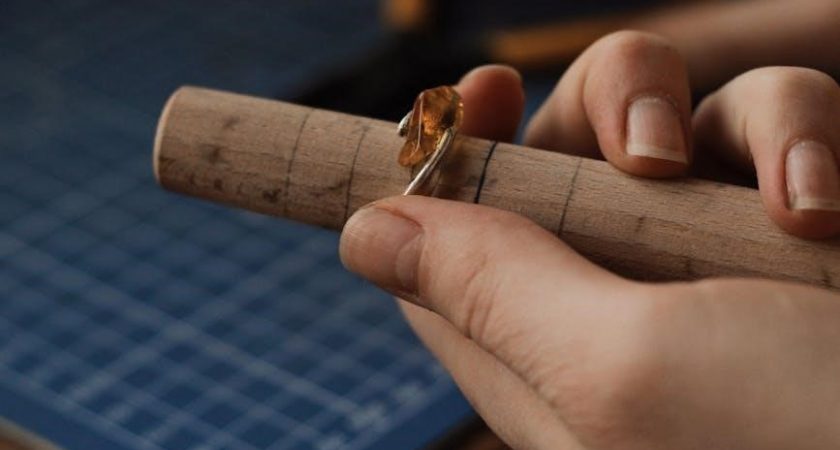Accurate ring sizing is crucial for a perfect fit․ This guide helps measure finger circumference in centimeters, convert sizes, and use tools like tape or existing rings effectively․

Understanding Ring Size Measurements
Ring size measurements are based on the internal diameter or circumference of the ring․ In centimeters, sizes correspond to specific diameters, ensuring a proper fit․ For example, a size 7 ring measures approximately 1․7 cm in diameter․ International systems vary, with US, UK, and European standards differing slightly․ To determine your size, measure the finger’s circumference in cm and match it to the corresponding ring size․ Accurate measurements are crucial to avoid a ring that is too tight or too loose․ Using tools like a tape measure or a printable chart can help achieve precise results․ Understanding these measurements ensures a comfortable and secure fit for any ring․

Methods to Measure Finger Size
Measure finger size using a tape measure, string, or existing ring․ These simple techniques help determine the best fit for your ring size accurately at home․
Using a Tape Measure
To measure your finger size with a tape measure, wrap it around the base of your finger, ensuring it’s snug but not tight․ The tape measure should fit comfortably, allowing you to slide it over your knuckle․ Measure the circumference in centimeters and use the size chart to find the corresponding ring size․ For accurate results, measure at room temperature, as fingers can swell slightly during the day․ If your knuckle is much larger than the base of your finger, consider the larger size to ensure the ring can be comfortably removed․ This method is quick and provides precise measurements for the perfect fit․
Using a String or Paper Strip
Cut a strip of paper or string approximately 10 cm long․ Wrap it snugly around the base of your finger, ensuring it can pass over the knuckle․ Mark the point where the ends overlap with a pen․ Lay the strip flat and measure the length in centimeters using a ruler․ This measurement corresponds to your finger’s circumference․ Compare it to a ring size chart to determine your size; For accuracy, avoid wrapping the strip too tightly or loosely․ This method is ideal for those without a tape measure, providing a simple way to measure finger size at home․ It’s an effective alternative for determining your ring size comfortably․
Using an Existing Ring
Measure the internal diameter of a ring that fits comfortably using a ruler․ Place the ring on a centimeter-side ruler, ensuring it sits from 0․ The internal diameter corresponds to your size․ For example, a 1․7 cm diameter is a US size 7․ Use a ring size chart to convert the measurement to your size․ This method is ideal if you already have a well-fitting ring․ Ensure the ring is placed correctly to avoid inaccuracies․ This approach saves time and provides a reliable way to determine your ring size without additional tools․ It’s a practical solution for those with a ring that fits perfectly on the desired finger․
International Ring Size Conversions
Understanding international ring size conversions is essential for matching sizes across regions․ US, UK, and European sizes differ, but measurements in centimeters provide a universal comparison․ Use charts to align sizes accurately․
US to UK Size Conversion
Converting ring sizes from US to UK standards requires understanding their differing scales․ US sizes are numerical, while UK sizes use letters․ For example, a US size 4 corresponds to a UK size H, and a US size 5 aligns with UK size I․ To convert accurately, measure the internal diameter of the ring in centimeters and match it to the corresponding size․ A US size 4 has a diameter of 1․58 cm, while a UK H is 1․59 cm․ Use a ring size chart to ensure precise alignment, as even small differences can affect fit․ Always double-check measurements for the best results․
European Size Conversion
European ring sizes are typically based on the internal diameter of the ring, measured in millimeters (mm)․ To convert to centimeters (cm), divide the diameter by 10․ For example, a ring with an internal diameter of 15․5 mm corresponds to 1․55 cm․ European sizes are often numeric, ranging from about 40 to 70․ A US size 4 (1․58 cm) is roughly equivalent to a European size 44, while a US size 6 (1․62 cm) aligns with a European size 46․ Use a ruler to measure the internal diameter of your ring and compare it to the European size chart for accurate conversion․ Precise measurement ensures the best fit․
Printable Ring Size Chart
A printable ring size chart is a convenient tool for determining your ring size at home․ Download and print the chart, ensuring the scale is accurate by measuring the 1 cm reference line with a ruler․ Place a ring that fits comfortably on the desired finger over the circular openings to find the corresponding size․ Alternatively, wrap a string or paper strip around your finger, mark the overlap, and measure its length in centimeters․ Compare this measurement to the chart to find your ideal size․ This method is quick, precise, and eliminates the need for specialized tools, making it easy to find the perfect fit for your ring․

Common Ring Sizes and Their Corresponding CM Measurements
- Size 4: 1․78 cm
- Size 4․5: 1․83 cm
- Size 5: 1․88 cm
- Size 5․5: 1․93 cm
- Size 6: 1;98 cm
- Size 6․5: 2․03 cm
- Size 7: 2․08 cm
- Size 7․5: 2․13 cm
- Size 8: 2․18 cm
- Size 8․5: 2․23 cm
- Size 9: 2․28 cm
- Size 9․5: 2․33 cm
- Size 10: 2․38 cm
- Size 10․5: 2․43 cm
- Size 11: 2․48 cm
- Size 11․5: 2․53 cm
- Size 12: 2․58 cm
- Size 12․5: 2․63 cm
- Size 13: 2․68 cm
These measurements provide a clear reference for selecting the perfect ring size, ensuring a comfortable and accurate fit․

Factors Influencing Ring Size
Finger shape, temperature, knuckle size, and weight fluctuations affect ring size․
- Finger shape and circumference
- Temperature effects on finger size
- Knuckle size considerations
- Weight fluctuations impact
Finger Shape and Circumference
Finger shape and circumference significantly influence ring size․ Slender fingers may require a slightly smaller size, while thicker fingers may need a larger size․ To ensure a proper fit, measure the circumference of the finger where the ring will sit using a tape measure or string․ This measurement, typically in centimeters, helps determine the appropriate ring size․ For example, a circumference of 5;7 cm corresponds to a US size 8․ Consider the finger’s shape to ensure the ring is comfortable and secure․ Accurate measurement is essential to avoid discomfort or a loose fit․ Use a printable ring size chart for guidance․
Temperature Effects
Temperature changes can affect finger size, influencing ring fit․ In warmer weather, fingers may swell, potentially making a ring feel tighter․ Conversely, in colder conditions, fingers may shrink, causing a ring to feel looser․ This fluctuation can impact the accuracy of ring size measurements․ To account for this, measure your finger at a neutral temperature, avoiding extreme heat or cold․ For best results, measure at different times of the day, as fingers tend to swell slightly during the evening․ Consider the average size to ensure a comfortable fit․ This consideration is crucial for selecting the right ring size accurately․
Knuckle Size Considerations
Knuckle size plays a significant role in determining the right ring size․ Larger knuckles may require a slightly bigger ring to ensure comfort and ease of removal․ If the knuckle is notably bigger than the finger, the ring should fit snugly over it without causing discomfort․ Measure the circumference of the finger at its widest point, including the knuckle, to ensure accuracy․ For individuals with very large knuckles, a ring with some flexibility or a wider band might be more suitable․ Always consider the knuckle size when choosing a ring, as it can affect both the fit and the overall comfort of the ring․
Weight Fluctuations
Weight fluctuations can affect ring size due to changes in finger circumference․ Even small weight changes can cause fingers to swell or shrink slightly, impacting how a ring fits․ For example, weight gain may result in a tighter ring, while weight loss could make it looser․ To ensure an accurate fit, measure your finger when your weight is stable․ If you experience frequent weight changes, consider a ring with adjustable sizing or a material like silicone, which can accommodate minor size variations․ Monitoring your ring fit during significant weight changes is essential to maintain comfort and prevent the ring from becoming too tight or slipping off․
Tips for Accurate Measurement
To ensure a precise ring size, measure your finger at the end of the day when it is neither swollen nor unusually cold․ Use a flexible tape measure or a string to wrap around the finger, ensuring it fits comfortably over the knuckle․ For the most accurate results, measure the specific finger you plan to wear the ring on, as sizes can vary slightly between fingers․ If using a ring you already own, measure its internal diameter in millimeters and compare it to a size chart․ Consider temperature fluctuations, as fingers can expand or contract slightly․ For the best fit, opt for a size that allows the ring to slide on and off without resistance․

Materials and Their Impact on Ring Sizing
Different materials can influence ring sizing due to their unique properties․ For instance, rings made from softer metals like gold or silver may require a slightly looser fit to avoid resizing․ Harder materials, such as platinum or titanium, are less prone to deformation, offering a more consistent size․ The thickness and weight of the ring also play a role; thicker bands may feel tighter, while lighter materials provide a more comfortable fit․ Understanding the material’s characteristics ensures a more accurate size selection, as some metals may expand or contract slightly over time․ Always consider the material when measuring to achieve the perfect fit․

Measuring Inner vs․ Outer Diameter
Measuring the inner and outer diameter of a ring is essential for accurate sizing․ The inner diameter refers to the hole inside the ring, which directly affects the fit․ To measure it, place the ring on a ruler aligned with the center, ensuring the inner edge aligns with the zero mark․ The outer diameter measures the total width of the ring, including the band․ This can impact comfort, especially for thicker rings․ For precise sizing, focus on the inner diameter, as it determines how the ring sits on the finger․ Always use a ruler with millimeter markings for accuracy, and ensure the ring is positioned correctly to avoid errors in measurement․ This step is critical for achieving the perfect fit․

Troubleshooting Common Issues
When measuring ring size, common issues arise, such as inaccurate readings or discomfort due to improper fit․ One issue is measuring the finger at the wrong time, as temperature fluctuations can cause size changes․ Another problem is using a ring that sits too tightly or loosely, leading to incorrect assumptions about size․ Additionally, improper use of tools, like wrapping a string too tight or loose, can result in inaccurate measurements․ To address these issues, ensure the finger is at a stable temperature, use a comfortable ring as a reference, and double-check measurements with a ruler or tape measure․ Consulting a professional jeweler can also resolve persistent sizing challenges effectively․
Determining the correct ring size is essential for both comfort and aesthetics․ By using tools like a tape measure, string, or existing rings, individuals can accurately measure their finger circumference in centimeters․ Understanding factors such as temperature, knuckle size, and weight fluctuations ensures a proper fit․ Printable charts and international size conversions provide additional convenience․ For those unsure, consulting a jeweler is recommended; A well-fitted ring enhances wearability and satisfaction, making the effort to measure accurately worthwhile․ Whether for a special occasion or everyday wear, achieving the right size guarantees a perfect fit and lasting enjoyment of the ring․

Expert Tips for Choosing the Right Size
For a flawless fit, measure your finger at the end of the day, as fingers tend to swell slightly․ Consider the knuckle size, as it must pass through comfortably․ Use a ring sizer tool or a strip of paper wrapped snugly around the finger for accuracy․ If uncertain, opt for a slightly larger size to ensure ease of wear․ Keep in mind that wider rings may require a larger size for comfort․ Always account for potential weight fluctuations or seasonal changes in finger size․ For the most precise fit, consult a professional jeweler who can provide tailored advice and adjustments․
Frequently Asked Questions (FAQs)
How do I measure my ring size without a tool? Use a string or paper strip wrapped around your finger, marking the overlap point to measure the circumference in centimeters․ What is the best time to measure my finger? Measure at the end of the day, as fingers tend to swell slightly․ Do ring sizes vary between countries? Yes, sizes differ; use a conversion chart to align US, UK, or European sizes․ Is a printable chart accurate? Yes, if printed correctly, it provides reliable measurements․ Can ring size change over time? Yes, due to weight fluctuations or temperature changes, so consider these factors when choosing your size․
